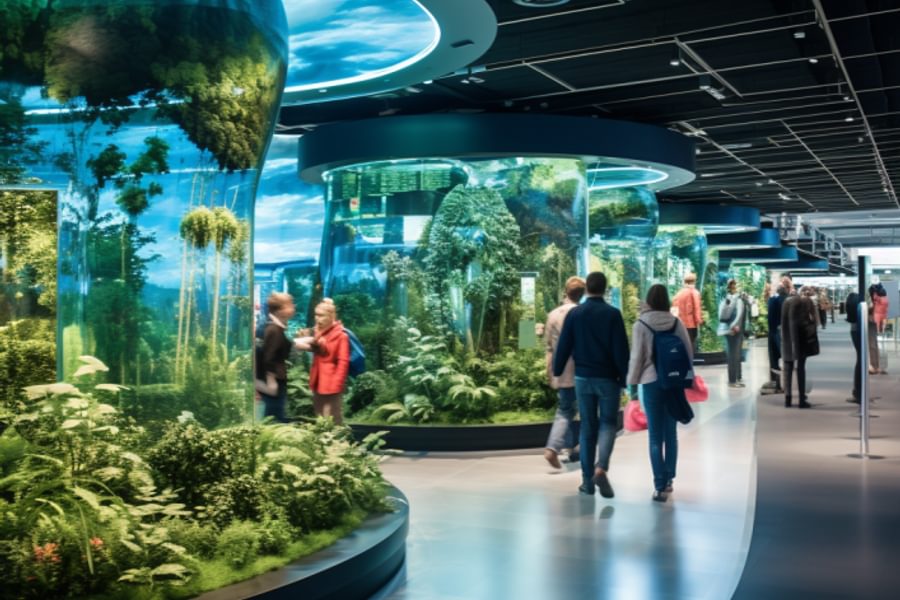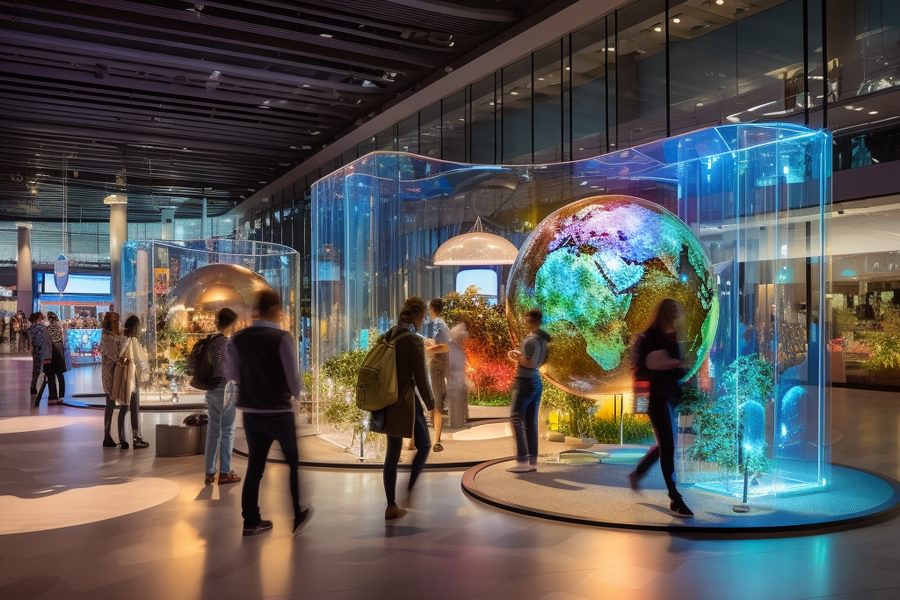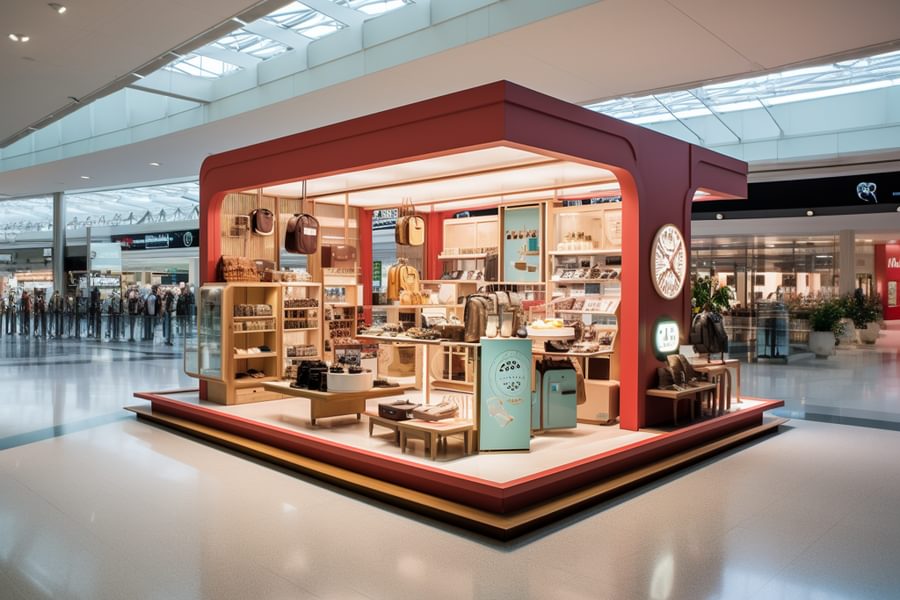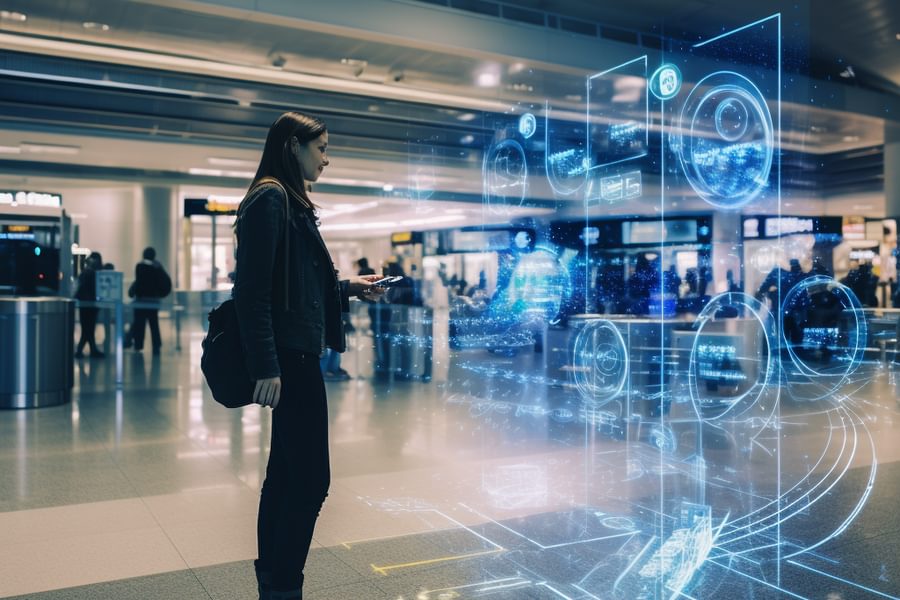
Evolving the Retail Offer in Airports: Meeting the Changing Needs of Global Travelers
The world of airport retail has undergone a remarkable transformation over the past few decades, transcending the traditional concept of duty-free shops and mundane terminals. Airports, once regarded primarily as transit hubs, have progressively emerged as dynamic centres of commerce and consumer experience. Today, the retail landscape in airports stands at the nexus of commerce, culture, and convenience, embodying a compelling narrative of change and adaptation. This Insight Paper, Director Adrian Griffiths, explores the evolution of the retail offer in airports, delving into the driving forces behind this transformation and the innovative strategies adopted by airports and retailers to cater to the ever-evolving needs of global travellers.
Air travel, once considered a necessity for business or leisure, has transcended its utilitarian purpose to become a lifestyle choice. It has expanded to include an enticing blend of shopping, dining, and entertainment options. From luxury boutiques to local artisan markets, from innovative pop-up shops to immersive brand experiences, airport retail has positioned itself as a microcosm of the broader retail industry, exemplifying the ability to adapt, thrive, and provide a unique consumer journey.
This evolution has been spurred by a multitude of factors. The rise of e-commerce and the digital age has ushered in a new era of convenience and choice for consumers, compelling airport retailers to redefine their value proposition. The advent of global travel hubs, mega-airports, and expanding international routes has further broadened the customer base and heightened the expectations of travellers. Moreover, the ever-changing landscape of travel trends such as generational expectations between different age groups, coupled with the unique challenges posed by security protocols and fluctuating passenger numbers, has necessitated a nimble and innovative approach to airport retail management.
As we delve into the changing face of airport retail, we will explore the challenges and trends that will continue to redefine this dynamic sector. We will uncover the strategies employed by airports and retailers to provide personalised and engaging shopping experiences, seamlessly integrating digital and physical channels. Moreover, we will examine the roles played by technology, sustainability, and shifting consumer preferences in shaping the future of airport retail.
In this journey through the evolving retail landscape of airports, we aim to unravel the underlying narratives of adaptation, innovation, and reinvention, ultimately shedding light on how airports continue to meet the changing needs of travellers, establishing themselves not only as gateways to the world but also as thriving centres of global commerce and culture.
Addressing these challenges often requires creative strategies, adaptability, and a deep understanding of the airport retail environment. Successful airport retailers continually assess their offerings, pricing, and customer service to remain competitive and profitable in a dynamic and competitive industry.
Understanding the challenges in delivering the ideal Retail and Leisure offer in Future Airports
The vision of airports as dynamic destinations where travellers enjoy a seamless blend of retail and leisure experiences is an exciting one. However, this vision is not without its share of challenges. As airports strive to transform into spaces that meet the evolving needs and expectations of modern travellers, several hurdles must be addressed to deliver the ideal retail and leisure offer in the future.
These key challenges that airport authorities, retailers, and stakeholders will encounter are as follows:
Economic Uncertainties and Passenger Fluctuations: Airports are inherently vulnerable to economic downturns, external shocks, and fluctuating passenger numbers. The challenge lies in finding strategies to maintain profitability and service quality even during times of uncertainty. Proactive planning, financial flexibility, and diversification of revenue streams are essential components of overcoming this challenge.
Security and Regulatory Complexities: Stringent security regulations and varying international regulations can complicate the retail and leisure experience within airports. Balancing security and efficiency while still delivering an enjoyable passenger journey requires close collaboration between authorities, retailers, and technology providers.
Space Constraints: Airports often operate in confined spaces where real estate is at a premium. Overcoming space limitations to accommodate a diverse range of retail and leisure offerings is a persistent challenge. Creativity in store design, layout optimisation, and flexible use of space is essential in addressing this issue.
Sustainability and Eco-Friendly Practices: While the emphasis on sustainability is a worthy goal, implementing eco-friendly practices and sourcing sustainable products can be complex and costly. Striking a balance between sustainability and economic viability remains a significant challenge.
Rapid Technological Advancements: The rapid evolution of technology necessitates ongoing investments in infrastructure, security, and adaptation to new tools. Airports must ensure that their technological solutions such as digital advertising remain current while considering the ever-changing landscape of digital innovation.
Changing Travel Trends and Consumer Behaviour: The fluid nature of travel trends and consumer preferences requires adaptability from airports and retailers. Keeping up with shifts in passenger behaviour and continuously reevaluating the retail and leisure offer is an ongoing challenge.
Health and Safety Measures: Ensuring passenger health and safety, especially in the post-pandemic era, is a complex and evolving challenge. Implementing stringent health and safety protocols while maintaining a welcoming atmosphere requires vigilance, ongoing training, and adaptation.
Workforce Management: The transient nature of employment at airports, coupled with the need for security clearances and irregular working hours, poses challenges in hiring and retaining a qualified workforce. Attracting and retaining talented personnel while ensuring a high level of customer service is a persistent challenge.
So how do we overcome these issues and design the airport of the future?
Firstly we must recognise Airports are no longer just transportation hubs; they have evolved into multifaceted spaces where travellers expect a seamless blend of retail and leisure experiences. As the world of aviation and consumer preferences continue to evolve, airport authorities and retailers must reimagine the ideal retail and leisure offer to meet the demands of modern travellers.
The airport of the future is a dynamic space that transcends traditional notions of air travel. Passengers now seek an immersive journey that encompasses a variety of experiences, from shopping and dining to relaxation and entertainment. To meet these evolving demands, airport authorities and retailers must craft the ideal retail and leisure offer, turning airports into vibrant destinations in their own right. We must recognise the customers time frame for shopping / eating before a flight is very limited and we must streamline the passenger journey through the airport as best we can to use this effectively. We must also recognise the passengers ability to only be able to carry products of a particular size.
This can be achieved by considering the following:
More efficient check-in, security search and passport control. The airport authorities need to work together as a team to upgrade their check-in, bag drop, security search and passport control systems to speed the process up, making it a more pleasurable experience that relaxes the customer and creates more leisure time.
Personalised Shopping Experiences: Airports are increasingly focusing on providing personalised shopping experiences for travellers. Using data and technology, retailers can offer tailored recommendations, discounts, and promotions to passengers based on their preferences, travel history, and location within the airport.
E-commerce Integration: Airports are exploring ways to integrate e-commerce and online shopping with the airport experience. Passengers may be able to pre-order products online and pick them up at the airport or have items delivered directly to their gate.
Duty-Free and Luxury Goods: High-end and duty-free shops will continue to be a significant part of airport retail. Luxury brands often have a strong presence in airports to cater to affluent travellers.
Pop-Up Shops and Experiential Retail: Airports are experimenting with pop-up shops and experiential retail concepts to engage and entertain travellers. These shops may offer interactive displays, product demonstrations, and exclusive in-store events.
Health and Wellness Retail: Given the increased focus on health and wellness, airport retailers are expected to expand their offerings of health and wellness products, such as vitamins, supplements, and personal care items.
Local and Artisan Products: Airports are increasingly showcasing local products and regional cuisine. Passengers can experience a taste of the local culture through airport retail.
Sustainability: Sustainable and eco-friendly products and practices are gaining importance in airport retail. Passengers are showing an increased interest in environmentally conscious shopping.
Augmented Reality (AR) and Virtual Reality (VR): AR and VR technologies can be used to enhance the shopping experience, allowing passengers to try on products virtually, explore destinations, or receive additional information about products.
Innovative Store Formats: Retailers are experimenting with innovative store formats, including unmanned kiosks, automated stores, and cashier-less checkout options to streamline the shopping process.
Omnichannel Retail: The integration of physical and digital shopping channels is becoming more prevalent. Passengers may start their shopping journey online, continue it in-store, and complete their purchase through a mobile app.
Biometric Payment and Identification: Biometric technologies, such as facial recognition, may be used for both payment and identification at airport retail outlets, enhancing security and efficiency.
The ideal retail and leisure offer in airports of the future is one that seamlessly combines technology, sustainability, personalised experiences, and health and safety measures. Airports that embrace these principles will not only meet the changing needs of travellers but also position themselves as premier destinations in the global travel landscape. As airports continue to evolve, their success will hinge on their ability to adapt, innovate, and provide an unforgettable journey from the moment travellers step through the terminal doors.






